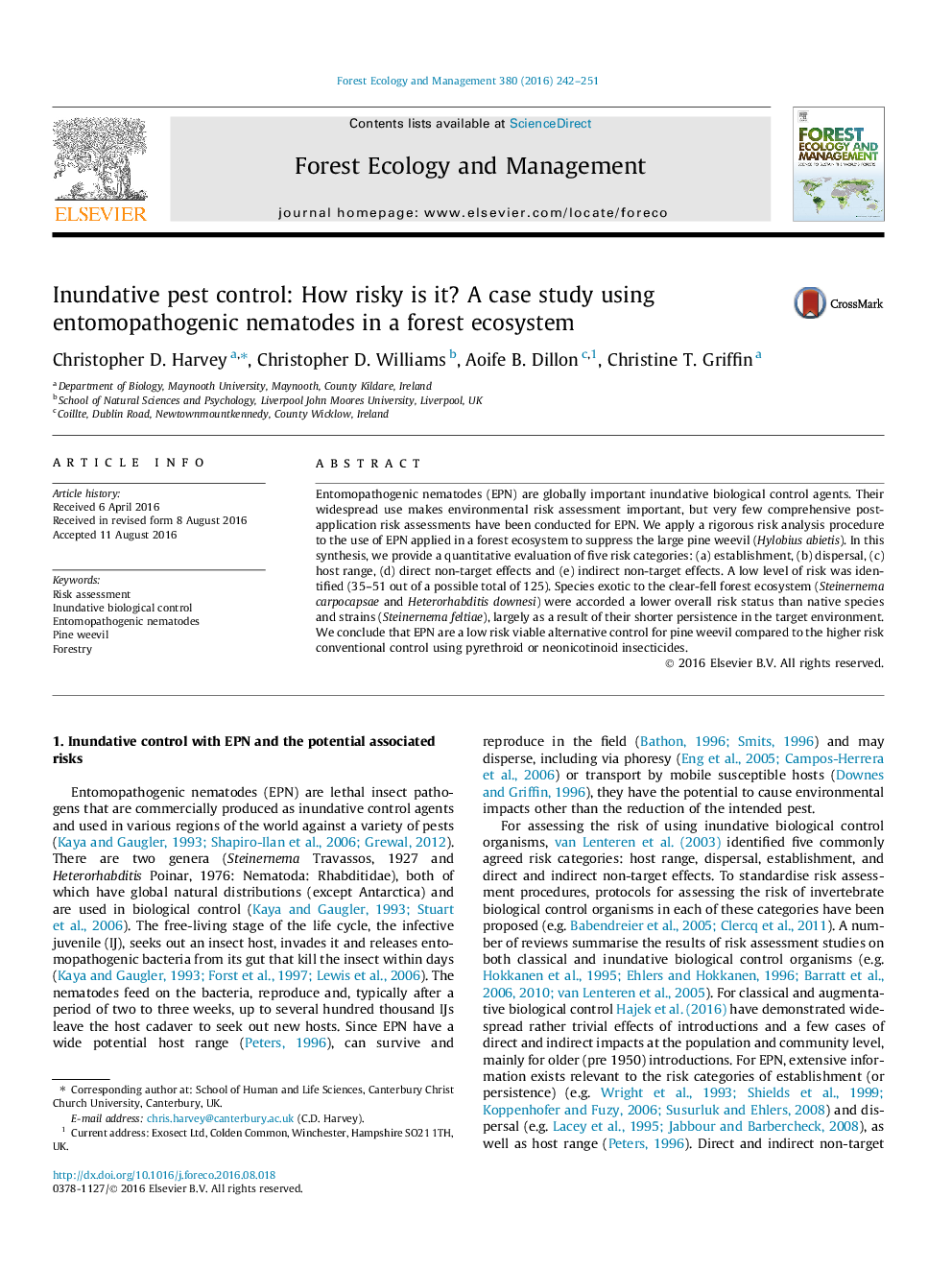| Article ID | Journal | Published Year | Pages | File Type |
|---|---|---|---|---|
| 4759679 | Forest Ecology and Management | 2016 | 10 Pages |
Abstract
Entomopathogenic nematodes (EPN) are globally important inundative biological control agents. Their widespread use makes environmental risk assessment important, but very few comprehensive post-application risk assessments have been conducted for EPN. We apply a rigorous risk analysis procedure to the use of EPN applied in a forest ecosystem to suppress the large pine weevil (Hylobius abietis). In this synthesis, we provide a quantitative evaluation of five risk categories: (a) establishment, (b) dispersal, (c) host range, (d) direct non-target effects and (e) indirect non-target effects. A low level of risk was identified (35-51 out of a possible total of 125). Species exotic to the clear-fell forest ecosystem (Steinernema carpocapsae and Heterorhabditis downesi) were accorded a lower overall risk status than native species and strains (Steinernema feltiae), largely as a result of their shorter persistence in the target environment. We conclude that EPN are a low risk viable alternative control for pine weevil compared to the higher risk conventional control using pyrethroid or neonicotinoid insecticides.
Related Topics
Life Sciences
Agricultural and Biological Sciences
Ecology, Evolution, Behavior and Systematics
Authors
Christopher D. Harvey, Christopher D. Williams, Aoife B. Dillon, Christine T. Griffin,
